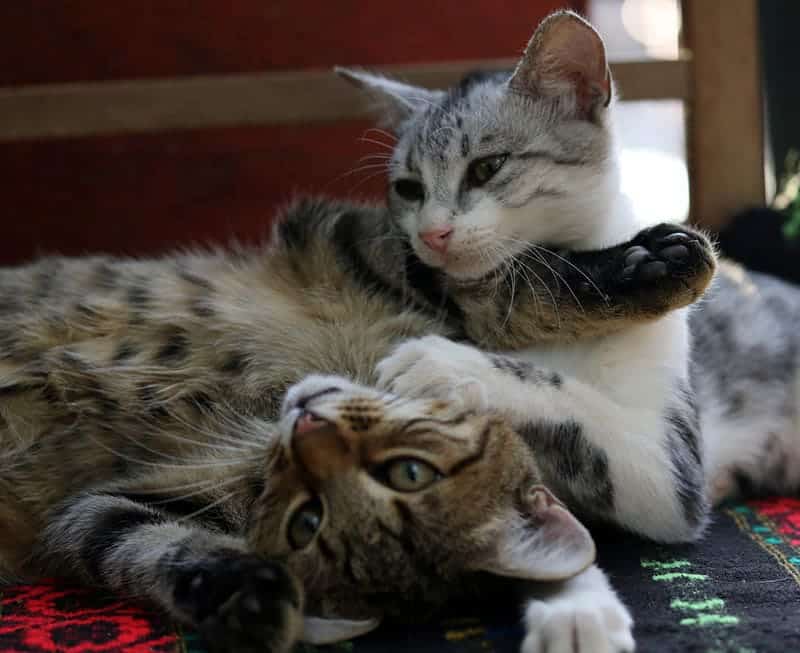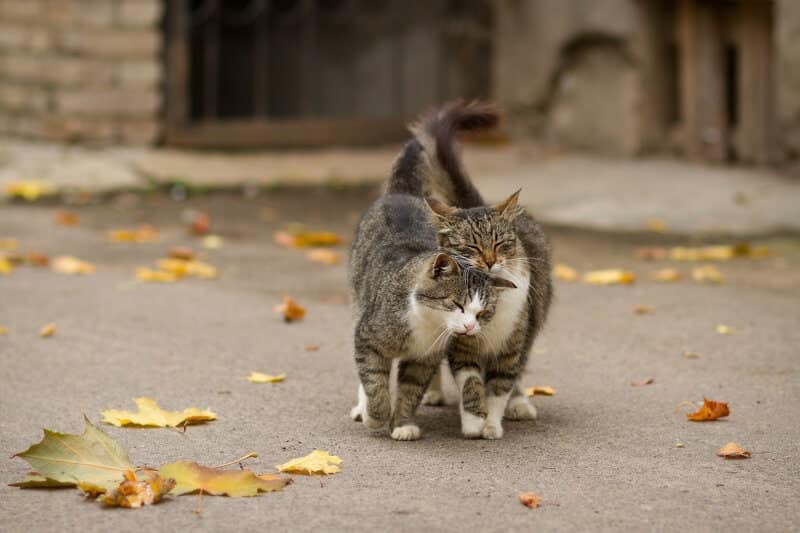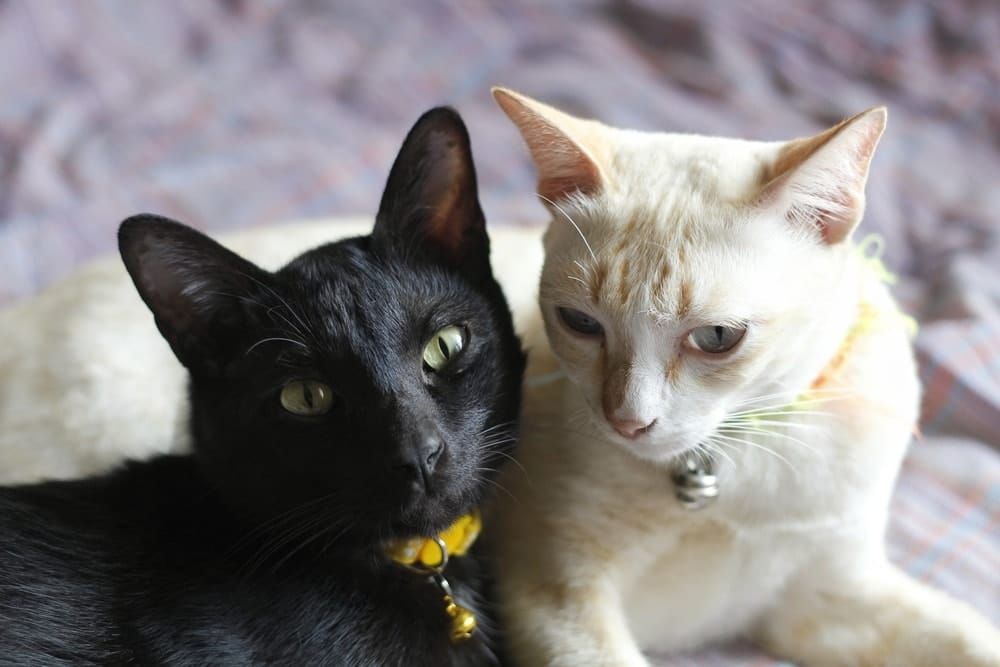As cat parents, we know that female cats mate when in heat, but what about male cats? They don’t go into heat like females, so when do they mate? Will they mate with a female if she isn’t in heat?
When it comes to whether a male cat will mate with a female if she’s not in heat, a male may definitely show interest in a female; however, mating is unlikely to occur, as the female wouldn’t allow it if she’s not in heat. Here’s what you should know about male and female cats regarding sexual maturity and mating.
Mating Outside of a Heat
Male cats reach sexual maturity between 4 and 6 months of age, meaning if they mate with a female in heat, a pregnancy can occur. In temperate regions of the Northern Hemisphere, such as the US, most female felines experience a heat and are typically undergoing their first pregnancy of the year from March to May.
However, cats are actually able to mate year-round if certain criteria are met. Females go into heat every 2 to 3 weeks if the following conditions are met:
- They are not already pregnant.
- They have attained around 80% of their maximum size (in terms of growth).
- They are sexually mature and have a normal reproductive system.
- They have exposure to over 8 to 10 hours of sunlight each day for a period of about a week or so.
Therefore, in tropical climates, a female cat can become pregnant at any time of the year. However, the chances of males actually mating with a female if she isn’t in heat is slim to none, as the female won’t allow the male to mount her if she isn’t interested, and outside of a heat, a female is unlikely to be interested. So, technically a male cat could be interested in mating with a female if she’s not in heat, but the chances of that mating occurring are practically non-existent.
In some instances, though, a very large male may easily be able to overpower a smaller female if he senses that she might be going into heat soon. In such a circumstance, mating itself is often unsuccessful, but the female may be injured or traumatized and not be readily accepting of males when she is in heat in the future.

How Do I Tell if Cats Are Ready to Mate?
If you have cats, you’ll notice several signs when they’re ready to mate. A sexually mature intact male cat is generally always on the lookout for females in heat and doesn’t display any unique signs of his willingness to mate. If he senses a female in heat nearby, he’ll try to mate with her and will fight other males for access to the female if they are also interested in her.
For female cats in heat, you’ll notice your pet doing some or all of the following:
- More affectionate than usual
- Excessive grooming (particularly in the genital area)
- Crouched on her forelegs with hindlegs raised and tail curled to the side
- Excessive, repetitive vocalizations (yowling)
- Lack of appetite
- Attempts at escaping the home to search for a male
- Spraying
If you’re seeing any of these signs from one or more of your cats, you need to keep a close watch on them to avoid an unwanted pregnancy!

The Importance of Spaying and Neutering
Though the term “neutering” is commonly used to denote desexing in male cats, the word itself isn’t in reference to a specific sex of cats (or other animals). The term can be used for a desexing procedure in either sex. Male-specific terms for the desexing procedure include an orchiectomy or castration.
Spaying or castrating (neutering) your pet is, of course, the best way to prevent unwanted pregnancy and avoid having loads of kittens on your hands. But that’s not the only reason to have your cat fixed! Not only does the procedure keep your cats from getting pregnant or impregnating others, but it also offers several important benefits.
One of these benefits is lengthening the time your cat will live for. One study found that neutered felines lived up to 62% longer than their unneutered counterparts, while spayed cats lived up to 39% longer. That’s a lot of time added to your pet’s lifespan!
Having your cat fixed can also keep it from engaging in behaviors that are undesirable (this goes for not only males but also females). The sorts of negative behaviors that can be lessened or negated with spaying and neutering include yowling, urine marking, roaming during heat, and aggressiveness.
Then there are the health benefits to spaying and neutering, as having your pet fixed can reduce the risk of certain illnesses (and, in some cases, prevent them entirely). For females, early spaying can eliminate uterine infections, as well as reduce the risk of mammary gland tumors. And for males, neutering lessens the risk of testicular cancer and reduces health issues associated with the prostate.

Conclusion
While male cats are capable and willing to mate with females year-round, chances of them actually doing so are very slim. If a female cat isn’t interested in being mounted, then it’s not happening, and since females are rarely interested outside of their heat cycle, mating outside of heat isn’t likely in most circumstances. If you have multiple cats or live in a neighborhood that’s full of felines, you’ll need to watch your pets to gauge whether they are in heat or ready to mate so as to avoid unwanted litters during mating season.
However, the best way to prevent unwanted pregnancy in your cats is by having your pet spayed or neutered. Not only does this result in no kittens, but it also offers your pet tons of health benefits!
- Related Read: Will Sibling Cats Mate?
Featured Image Credit: Wasuta23, Shutterstock











